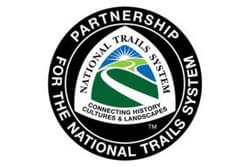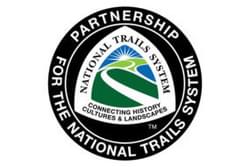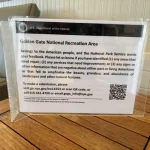

Bipartisan Efforts in Trail Legislation: Shaping America’s Outdoor Legacy
The recent introduction of legislation aimed at strengthening partnerships between national trail organizations and governmental agencies has sparked a wave of discussion among outdoor enthusiasts and policy experts alike. At its heart, the proposed Appalachian Trail Centennial Act seeks to cement a cooperative relationship between federal authorities and non-governmental organizations such as the Appalachian Trail Conservancy (ATC), ensuring that America’s cherished trails receive the care, attention, and protection they deserve.
This initiative, supported by lawmakers from both sides of the aisle, underlines a growing recognition that the natural treasures housed within our national parks are not only essential for recreation, but also serve as strong economic drivers in many local communities. In a time when public lands face many tricky parts and tangled issues—from funding shortages to environmental stressors—this legislative move represents a key step in addressing the overwhelming challenges that threaten our natural heritage.
Many outdoor fans, community advocates, and local business owners have long appreciated the work done by trail partners like the ATC. This act, which celebrates a century of dedication by the ATC, promises to formalize and enhance existing arrangements while ensuring that the roles and responsibilities of all parties involved are clearly defined. For those who’ve roamed the winding paths of the Appalachian Trail, it’s encouraging to see that efforts are underway to protect these spaces not just for leisure enjoyment but also for their economic and cultural contributions.
Appalachian Trail Centennial Act: Clarifying Roles and Responsibilities
Legislation such as the Appalachian Trail Centennial Act isn’t merely bureaucratic tinkering—it’s a thoughtful approach to how our national scenic trails are managed. At a time when outdoor recreation is increasingly recognized as both a key driver of local economies and a cornerstone of American culture, the act redefines the partnership model between government entities and organizations like the ATC.
The bill is designed to create a new class of “Designated Operational Partners” who can work alongside federal, state, and local stakeholders in a unified effort aimed at better protecting the trail system. This measure is intended to help all parties figure a path through the often intimidating administrative twists and turns that can make managing large natural resources feel overwhelming.
Critical to this effort is the need to simplify the roles of non-governmental organizations by removing the confusing bits that sometimes arise when federal regulation meets on-the-ground stewardship. The ATC’s longstanding success, marked by its tireless efforts over a hundred years, is now set to be backed by a strong legislative mandate. In doing so, the act hopes to put an end to the traditional back-and-forth that has sometimes bogged down efforts to maintain and improve these iconic trails.
By clarifying responsibilities and establishing strong working protocols, the Appalachian Trail Centennial Act is more than just a piece of legislation—it’s a commitment to preserving a national legacy. It ensures that the passionate individuals who devote their time, energy, and resources to the trail system have a clear mandate, free from the nerve-racking uncertainties that come with shifting policies and funding challenges.
Federal and Local Collaboration: Reaping Economic Benefits for Gateway Communities
One important aspect of the legislation is its focus on the economic impact of national scenic and historic trails on adjacent communities. Federal agencies will now be required to partner with local and state stakeholders to study usage patterns and gauge the economic boost provided by these natural corridors. This collaboration is not only about preserving beauty; it’s also a practical strategy to keep local economies thriving.
A closer look at the potential benefits reveals several key points:
- Boost in Local Businesses: Increased visitation to trail areas typically leads to higher revenues for restaurants, shops, and lodging facilities.
- Job Creation: Maintenance, guiding, and ancillary services related to trail management can provide employment opportunities for residents.
- Community Well-Being: Enhanced natural spaces contribute to both physical and mental health, which in turn has positive implications for community vitality.
- Sustainable Development: Partnerships can promote eco-friendly growth initiatives, ensuring that local communities continue to benefit from the trails over the long term.
As Senator Tom Kaine of Virginia remarked, America’s national trails are among its most treasured assets—not only because of their scenic and recreational appeal but also due to the tangible economic and social benefits they foster. The legislation calls for a thorough investigation into these benefits, so that future improvements, planning, and resource allocation are backed by solid evidence and community insights.
This forward-thinking approach highlights the need to look into even the finest details when assessing the impact of environmental policy. By taking a close look at these economic advantages, the federal government can ensure that outdoor recreation continues to be a catalyst for growth, all the while safeguarding the natural beauty of our landscape.
Strengthening Public-Private Partnerships: Clearing the Way for Collaborative Trail Management
It is no secret that the small details can determine the success of a large-scale initiative. In the case of the Appalachian Trail Centennial Act, solidifying partnerships between public entities and private organizations is seen as the way forward. Ranking among the most important of these steps is the creation of Designated Operational Partners who can work in concert with multiple levels of government.
This collaborative framework is intended to help all stakeholders get into the nitty-gritty of managing and preserving the nation’s trails. For instance, the ATC, a trusted partner for over a century, will now have its role defined with the same clarity that is being applied to the responsibilities of federal agencies. This joint approach is expected to enable a more rapid and coordinated response during emergencies—such as natural disasters—where quick and decisive action is essential.
Consider the following aspects that underline the strength of public-private partnerships:
| Aspect | Why It Matters |
|---|---|
| Clear Role Definitions | Reduces overlapping responsibilities and prevents the type of nerve-racking confusion that can slow down essential work. |
| Regular Communication Channels | Fosters a smoother flow of information that enhances coordination during both routine and unexpected events. |
| Joint Economic Assessments | Ensures that community welfare is taken into account alongside environmental and conservation goals. |
| Unified Strategic Planning | Helps all parties figure a path forward, turning complex administrative puzzles into manageable steps. |
This table highlights just a few of the critical benefits that are likely to emerge from a more integrated and transparent system for trail management. By reducing tangled issues and simplifying operational challenges, the legislation presents a practical blueprint for improving the way public lands are run.
Protecting National Scenic and Historic Trails: A Commitment to Future Generations
Our national parks and trails are more than just scenic byways; they encapsulate a rich tapestry of cultural history, ecological diversity, and communal identity. With millions of acres stretching along varied terrains, preserving these spaces is as much about remembering our shared past as it is about planning for a sustainable future. This legislation is a supervised effort to ensure that these natural corridors remain available for future generations.
The proposed act emphasizes the importance of maintaining these areas in a state that can support both recreational use and ecological balance. Supporters argue that a well-preserved trail not only promotes tourism and local pride but also stands as a living monument to the legacy of community-driven stewardship.
In examining the subtle parts and hidden complexities of managing such extensive lands, a few key priorities come to the forefront:
- Long-Term Conservation: Ensuring that natural resources are protected and maintained through strategic planning and investment.
- Enhanced Navigation for Visitors: Improving access and services so that both seasoned hikers and newcomers can find their way easily.
- Responsive Management Systems: Implementing efficient communication channels that allow for quick action during emergencies or unexpected issues.
- Community-Driven Action: Involving local communities in the decision-making process to reflect their needs and aspirations.
This multifaceted approach isn’t without its challenges. Disentangling the complicated pieces of federal and local priorities involves overcoming a mix of regulatory hurdles and budgetary constraints. However, the legislation signals an essential commitment to take a closer look at these problems, hopeful that the resulting framework will foster a more resilient and adaptable system for managing the nation’s natural resources.
Understanding the Economic Ripple Effects of National Trail Investments
Beyond the scenic beauty and recreational allure, national trails are a potent economic force. Regional economies deeply depend on the influx of visitors who come to hike, camp, and explore these cherished wild spaces. With the proposed legislation asking federal agencies to study usage patterns and report on the economic impact, it becomes clear that there’s a strong push to recognize and enhance this dynamic connection between nature and community growth.
The economic ripple effects of investing in trail infrastructure and preservation can include:
- Increased Tourism Revenue: As trails become better maintained and more accessible, more people are encouraged to visit, leading to higher spending in nearby towns.
- Boosts to Local Employment: Whether it’s in hospitality, retail, or trail maintenance, the jobs created through enhanced trail usage benefit local residents in a direct and meaningful way.
- Property Value Enhancements: Proximity to well-maintained trails and recreational facilities can elevate the desirability of nearby housing, contributing to rising property values.
- Sustainable Business Growth: As more visitors flock to these areas, local businesses can experience steady growth, which is vital for sustaining the community’s long-term prosperity.
It’s clear that the new legislation is not simply about protecting a scenic route—it’s about bolstering an entire ecosystem that supports economic development and community welfare. By requiring detailed economic studies and stakeholder feedback, the proposed act ensures that future improvements are based on real-world insights rather than assumptions. This pragmatic approach helps to iron out the tricky parts of policy-making by ensuring that the fine points are well understood and addressed.
Smoothing the Road Ahead: Policy Challenges and Opportunities
Despite its many promising aspects, the path to fully realizing the benefits of the Appalachian Trail Centennial Act is not without its challenges. As with any policy reform involving multiple layers of government and numerous stakeholders, there are several nerve-racking factors that need careful thought.
Some of the most intimidating hurdles include:
- Budgetary Constraints: Financial resources are finite, and aligning the varied funding mechanisms of federal, state, and local entities requires careful planning and coordination.
- Administrative Hurdles: The overlapping responsibilities between agencies can lead to conflicting priorities, making it a bit of a challenge for parties to figure a path forward.
- Environmental Changes: With climate change influencing weather patterns and ecosystem balances, planning for long-term maintenance becomes even more complicated.
- Community Engagement: Ensuring that all voices are heard in the planning process, especially those from smaller or underrepresented communities, is essential but often off-putting in its complexity.
Addressing these issues requires robust collaboration and a willingness on the part of all involved to push past the confusing bits and tangled issues. Open communication channels, regular stakeholder meetings, and a shared commitment to the broader goals of conservation and community enrichment will be crucial for turning these challenges into opportunities.
One potential way to manage these obstacles is through a series of pilot programs that test out new models of cooperation and funding allocation. Such initiatives could be used to work through some of the subtle details that often complicate larger government partnerships. By taking incremental steps, policymakers can learn, refine, and gradually build up a comprehensive framework that benefits every party involved.
Lessons from the Past: Successful Models of Trail Stewardship
History offers us several shining examples of how strong public-private partnerships can lead to effective resource management and trail stewardship. The Appalachian Trail Conservancy’s century-long history is a case in point, illustrating that when communities, volunteers, and government agencies work hand-in-hand, even the most nerve-racking challenges can be met with creative and effective solutions.
Looking back at successful models of trail management provides valuable insights. For instance, the cooperative response during emergencies—such as severe weather events—has often been the litmus test for the strength of existing frameworks. These experiences have shown that the ability to quickly get into a coordinated response not only mitigates damage but also reassures the public that their natural treasures are in safe hands.
Several key lessons emerge from these experiences:
- Shared Responsibility: When both government and non-governmental organizations accept and clearly define their roles, the overall system becomes more resilient.
- Community Empowerment: Involving local communities in decision-making processes leads to more sustainable outcomes and fosters a sense of ownership among residents.
- Proactive Planning: Early investment in adaptive strategies—such as infrastructure improvements and emergency response training—can avert many of the nerve-racking crises that often come with unplanned events.
- Flexibility in Policy Implementation: Being able to adjust strategies in reply to new challenges is essential in an environment where the only constant can be change itself.
By embracing these lessons and applying them to the new legislation, policymakers can create a robust framework that isn’t weighed down by bureaucratic delays or conflicting priorities. The idea is to learn from past experiences and build on them, rather than reinventing the wheel entirely. This approach, while challenging and sometimes intimidating, is a recipe for sustainable stewardship over our national trails.
Designated Operational Partners: The Future of Trail Stewardship
The planned creation of Designated Operational Partners marks a decisive step towards a more organized and effective management system for our national trails. By forging a connection between federal, state, and local agencies with trusted organizations such as the ATC, the legislation is expected to pave the way for smoother coordination and a more unified approach to natural resource management.
This shift will benefit not only the trails and protected areas but also the communities and economies that rely on them. With clearly defined roles and shared priorities, this initiative can help clear up a host of the complicated pieces that have long hampered collaborative efforts.
Designated Operational Partners will be responsible for:
- Coordinating Resources: Ensuring that funding and manpower are effectively allocated across various maintenance and improvement projects.
- Streamlining Communication: Facilitating regular dialogue between different stakeholders to foster rapid decision-making during crises and routine operations alike.
- Monitoring and Reporting: Implementing systems to track economic benefits, environmental impacts, and visitor usage patterns, thereby keeping the entire system transparent and accountable.
- Engaging Local Communities: Incorporating community feedback into strategic planning and recognizing the essential role that local voices play in shaping long-term success.
By formalizing these roles, the legislation is intended to act as a roadmap for ongoing collaboration. In an era marked by environmental uncertainty and closely intertwined community needs, working together in a clear and focused manner is more critical than ever. The proposed framework not only empowers existing partners but also opens the door for new allies in the pursuit of sustainable trail stewardship.
Charting a Collaborative Future: Opportunities and Action Items
As outdoor enthusiasts and concerned citizens, it’s vital that we keep a close eye on the ongoing developments around this legislation. The opportunities presented by these changes are enormous, and they offer us a chance to be a part of a transformative era in the management and preservation of our national trails.
Key action items and opportunities moving forward include:
- Community Involvement: Stay informed about local government plans and public consultations. Consider participating in town hall meetings or public forums where these issues are discussed.
- Advocacy and Outreach: Support organizations like the ATC that have a strong track record of conservation advocacy and community engagement.
- Monitoring Policy Implementation: Keep a close watch on how the new legislation is rolled out, and provide constructive feedback to ensure that its implementation stays true to the spirit of long-term conservation.
- Sustainable Tourism Initiatives: Encourage local business owners to align with sustainable tourism practices that support both economic growth and environmental stewardship.
Engaging with these items not only strengthens the push for better trail management but also fosters a sense of shared responsibility among all stakeholders. By taking a proactive stance however small it may seem, each individual action contributes to a larger shift toward responsible and integrated natural resource management.
This is a moment for communities, policymakers, and conservation advocates to come together, figure out a path forward, and embrace the many opportunities that lie ahead. The upcoming years promise to be a period of significant change, and it’s up to all of us to ensure that this change steers us toward a future where America’s great outdoors remain pristine and accessible.
Community Voices: Local Perspectives on the Centennial Act
One of the most influential aspects of the new legislation is its focus on including local perspectives. For families living near these trails and for small businesses that have flourished thanks to outdoor tourism, the proposed changes promise tangible benefits. Many community leaders are hopeful that this approach will instill in them a renewed sense of pride and ownership over their local natural resources.
Lowering the barriers between government bodies and local residents not only decreases misunderstandings but also makes it easier to address the small distinctions in community needs. For instance, a town that has long been a gateway for hikers might see improved infrastructure and increased tourism revenues, making community growth more sustainable over time. In smaller municipalities, where every incremental boost can make a significant difference, the policy offers a chance to improve local services and venture into new economic opportunities.
Engaging local voices is a win-win scenario: it gives residents the super important chance to directly impact policies that shape their environment, while also ensuring that diverse perspectives are considered in the decision-making process. In this way, the legislation becomes more than just government policy—it evolves into a community-driven movement aimed at preserving and enhancing a shared natural legacy.
From Vision to Reality: A Call for Active Participation
The journey from policy proposal to tangible on-the-ground improvements is never a simple one, and the road ahead is full of twists and turns. Yet the enthusiasm and long-standing commitment of organizations like the Appalachian Trail Conservancy have paved the way for this renewed push toward better collaboration. Now, more than ever, it is critical for everyday citizens—whether they are seasoned backcountry explorers or local community members—to take an active role in this national conversation.
Getting involved doesn’t require a deep understanding of all the complicated pieces; it only calls for a willingness to dig into the nitty-gritty on issues that directly affect our coast-to-coast national heritage. By making your voice heard, joining public forums, and supporting local conservation efforts, you too can help shape the future of America’s trails.
For those who find the current state of affairs a bit overwhelming, think of this as a call to action—a gentle nudge to get into conversations that matter and to support the initiatives that have long been in the offing. After all, the preservation of national scenic and historic trails is not just the responsibility of a few; it is a shared duty and a testament to our collective love for the great outdoors.
The Path Forward: Embracing Change with Optimism
There is an undeniable sense of hope and renewal in the corridors of policy reform right now. The Appalachian Trail Centennial Act represents a proactive step toward ensuring that our national trails continue to be celebrated, preserved, and enhanced for generations to come. While the journey is dotted with challenging parts and nerve-racking decisions, the overarching spirit of collaboration and dedication is a welcome reminder of what can be achieved when diverse groups work together.
In a time when it’s all too easy to feel overwhelmed by the small distinctions in conflicting priorities, this legislation brings with it a clear mandate: to ensure that America’s national trail system remains not only a scenic wonder but also a robust source of economic and cultural vitality for local communities.
By fostering stronger federal, state, and local partnerships—and by taking the wheel in seizing new opportunities for community-led development—this initiative is set to prove that even the most complicated bits of policy can be sorted out through open communication, shared dedication, and a genuine passion for nature.
Final Thoughts: Keeping America’s Trails Alive and Thriving
As we look to the future, it’s clear that legislation such as the Appalachian Trail Centennial Act offers more than just administrative reforms. It represents a renewed commitment to protect, nurture, and enhance the natural wonders that bind our nation together. From the verdant swathes of the Appalachian Trail to the remote corners of our national parks, every mile of trail is a living testament to our nation’s spirit of adventure, community, and resilience.
This is a call for all of us—policy makers, local communities, outdoor enthusiasts, and everyday citizens—to rally behind a future where every twist and turn of our national trails is managed with clarity, dedication, and a shared love for the outdoors. The legislation invites us all to take part in a journey where the ultimate reward is not just the well-being of a trail but the flourishing of an entire ecosystem that supports both nature and the local communities that call it home.
Let this new chapter be a reminder that while managing America’s outdoor legacy may sometimes feel intimidating or even overwhelming, working together makes all the difference. By statistically measuring economic impacts, streamlining operational roles, and ensuring that every stakeholder from the government to the local hiker has a voice, we are stepping into a future where America’s trails do more than just guide us through the wilderness—they inspire and sustain us.
In the end, it’s a matter of collective resolve. The Appalachian Trail Centennial Act calls upon each of us to be vigilant, engaged, and supportive of the partnerships that keep our national parks and trails thriving. With thoughtful actions, meticulous planning, and a willingness to address every fine point along the way, we can ensure that these historic corridors continue to enrich our lives well into the next century.
Conclusion: A Shared Responsibility for a Shared Treasure
In conclusion, the legislation aimed at strengthening national trail partnerships is a significant stride in the effort to preserve one of America’s greatest natural assets. It’s a testament to what can be achieved when government entities and non-governmental organizations work through every challenging twist and turn to establish clearer roles, sustainable growth, and economic prosperity for local communities. While there may be intimidating obstacles ahead, the proactive steps detailed in this act promise a more navigable and collaborative future.
Whether you are a devoted hiker, a local business owner benefiting from trail tourism, or a citizen who simply values the great outdoors, the message is clear: our national trails are a shared treasure, and protecting them is a shared responsibility. As we move forward, let us embrace this legislation with optimism and a renewed commitment to keeping America’s trails alive and thriving for generations to come.
Originally Post From https://www.nationalparkstraveler.org/2025/09/legislation-introduced-strengthen-national-trail-partnerships
Read more about this topic at
Using Partnerships and Cooperation to Get What You …
Building Collaborative Relationships: Bridging the Gap …


